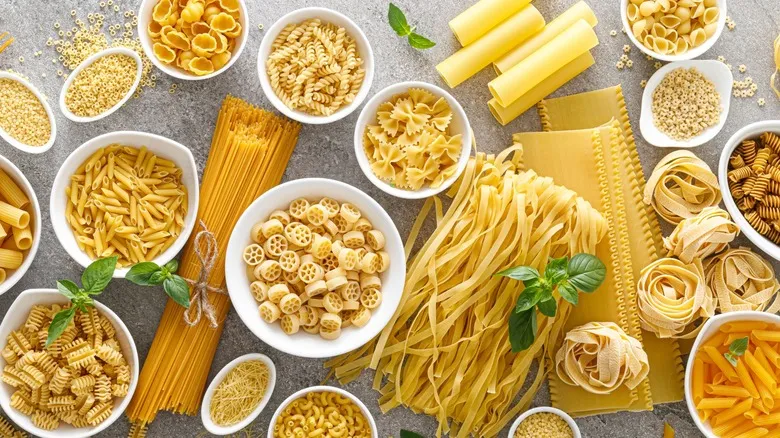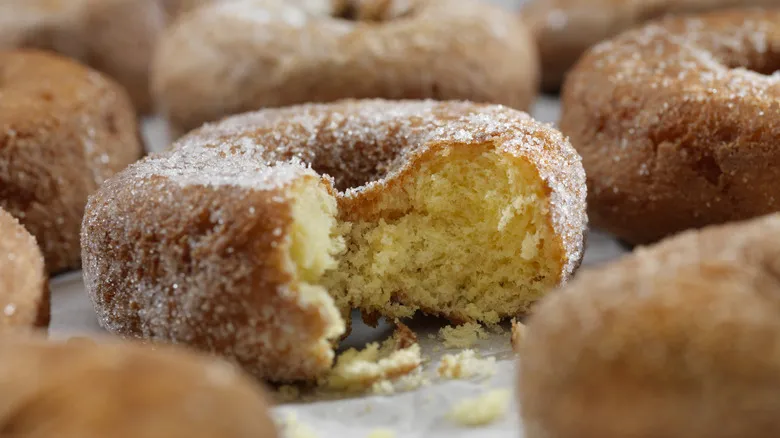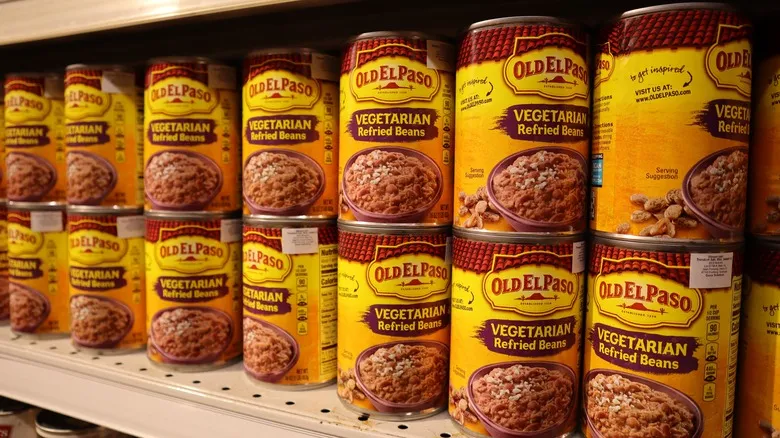Cinque buchi was made by mistake

The unusual geometric pasta shape known as cinque buchi is believed to have originated over 1,000 years ago, when a pasta maker in Catania was tasked with producing large quantities of macaroni for a noble family. However, an error occurred during the pasta-making process, resulting in the peculiar interconnected tubes that would come to be known as cinque buchi. Although it was initially a mistake, the shape quickly won the admiration of locals and became linked to the Carnival season in Catania.
Consequently, cinque buchi—literally translating to "five holes"—is sometimes referred to as "carnival pasta." The four corner holes and the larger central hole create ample surface area for sauces and seasonings to adhere to. Typically, cinque buchi is prepared in a dish featuring diced pork and/or sausage, tomatoes, and various seasonings, resulting in a rich, meaty pasta dish perfect for Carnival celebrations. While cinque buchi is difficult to find outside of Catania and beyond the Carnival season, "Sporkful" podcast host Dan Pashman and pasta company Sfoglini have recently introduced a ridged alternative to this rare shape, called "quattrotini."
Corzetti del Levante was a status symbol for Renaissance nobles
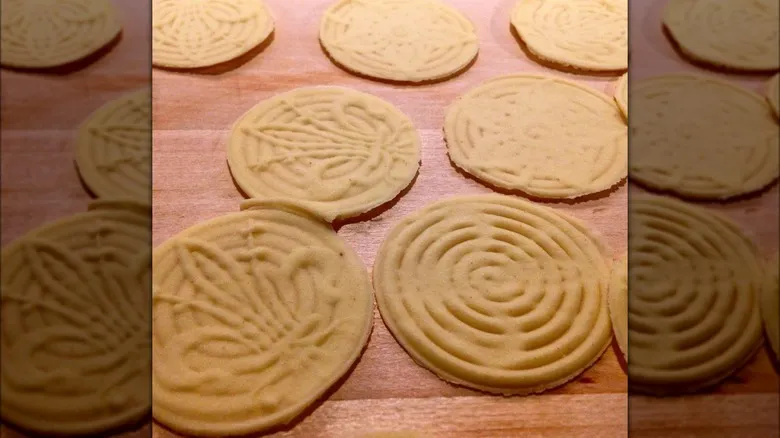
The distinctive shape of corzetti del Levante immediately draws attention with its flat, circular design and decorative embossments directly on the pasta. While these embellishments certainly set it apart from typical pasta noodles, they serve a practical purpose as well — increasing the surface area for sauces to adhere to each little floury disc. Each piece measures approximately 1.5 inches in diameter, though it's likely that different households have crafted corzetti del Levante in various sizes throughout its long history. It's also important to mention that there are two unique varieties of corzetti in its home region of Liguria: the stamped corzetti del Levante and "corzetti valpolceveraschi," which features a twisted design resembling a figure of eight instead of a stamp.
There is some speculation regarding the origins of corzetti del Levante, with potential connections to the "corzetto," a round coin from Genoa dating back to the 14th century. It may also trace back to the Latin term "crux," meaning "cross," which was once embossed on the faces of corzetti del Levante (and also appeared on the "corzetto" coin, giving it its name). Regardless, the tradition of imprinting designs on these circles thrived during the Renaissance, when affluent families would have their coats of arms or sigils stamped onto their corzetti. So, if you want to impress your guests at your next dinner party, consider creating your own corzetti del Levante stamp and serving up some truly unique pasta!
Caccavelle are massive pasta shells
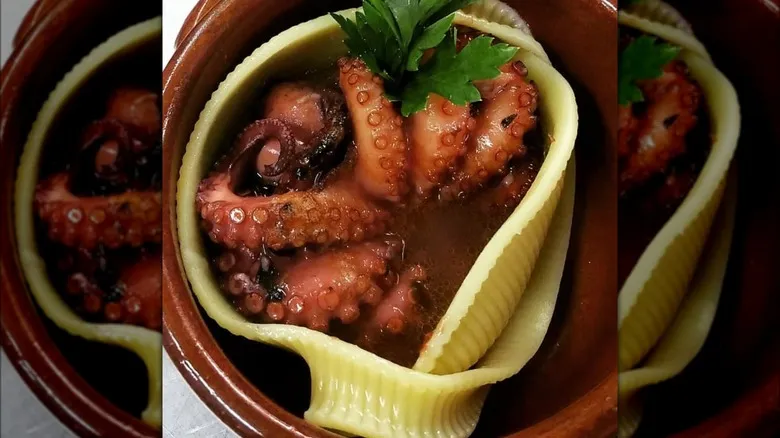
You may be familiar with pasta shells like conchiglie, but caccavelle truly distinguishes itself with its impressive size. Essentially a giant hollow bowl, caccavelle measures around 4 inches in diameter and about 6 inches tall, making it the largest pasta shell in existence.
The name "caccavelle" means "pots" in the local dialect of Naples, where this pasta originated. It was introduced to the culinary world in 2009 by the Gragnano Pasta Factory, a company known for its artisanal pasta. Sold in packs of four, these shells can serve as substantial vessels for your favorite sauces. There are countless recipes that suggest filling these enormous shells, including hearty ragus, fresh seafood, and creamy spinach-ricotta mixtures. Picture using the same recipes you would for stuffed pastas, like cannelloni, but with your delicious filling nestled in an edible bowl!
Cascatelli is a modern-day invention
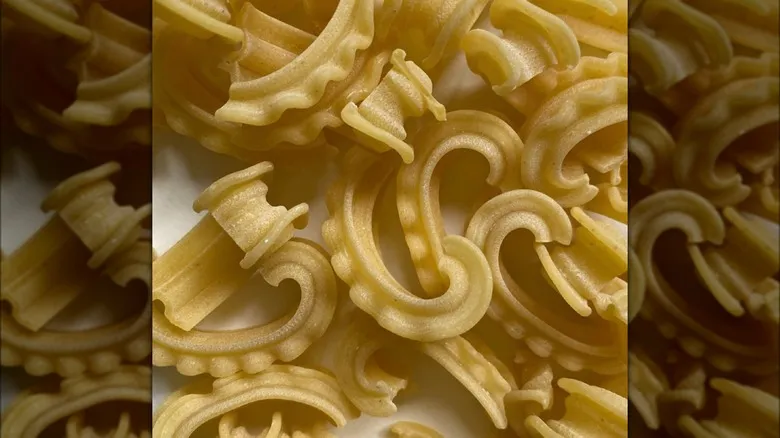
Pasta is a constantly evolving culinary craft, with new shapes being invented even today. A prime example of this evolution is cascatelli, the first original pasta shape developed through the collaboration of Dan Pashman and Sfoglini, the same team responsible for quattrotini, a modern twist on cinque buchi. Officially launched in 2021, cascatelli emerged after three years of meticulous development aimed at perfecting the ideal pasta form.
In designing cascatelli, Pashman aimed to achieve the perfect shape that embodies his three key criteria for pasta quality: "sauceability" (the ability of the pasta to hold onto sauce), "forkability" (how easily you can stab or scoop the pasta with a fork), and "toothsinkability" (the satisfying texture experienced when biting into the pasta).
Cascatelli's design reflects all three of these attributes. Its distinctive, asymmetrical waterfall-like shape—after which it is named—ensures excellent sauce retention and a varied texture. Whether you use this pasta as a delightful alternative in your mac and cheese or experiment with different sauces (or even incorporate it into salads), you’ve truly never experienced anything quite like cascatelli.
Racchette is a pasta mystery
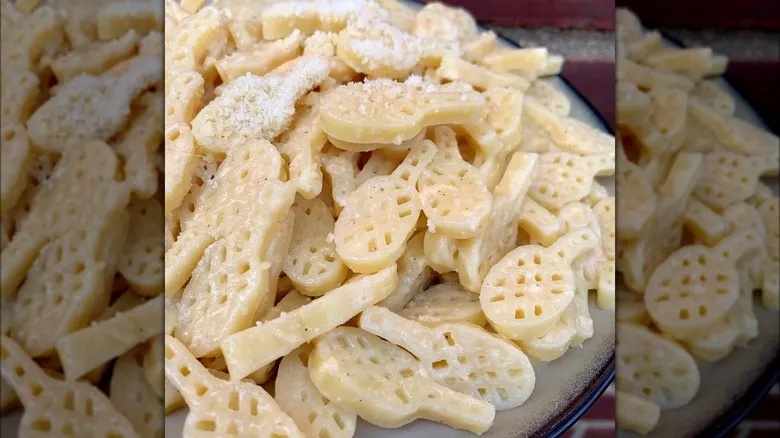
Uniquely shaped pastas are not a novel idea. We already have varieties like stelline (star-shaped pasta) and rotelle (pasta resembling wagon or bicycle wheels), to name a few. However, few pastas are as distinctly shaped as racchette, which, as its name suggests, resembles tiny tennis rackets. This playful and quirky shape is especially delightful for tennis enthusiasts among your friends and family. The numerous small holes in the pasta serve as a net, effectively capturing any sauce it encounters. Whether paired with a classic tomato sauce, a creamy cheese base, or a vibrant pesto, each mini racket promises a burst of flavor.
Racchette is a contemporary creation, an original invention of the De Cecco pasta company, which is primarily located in Fara San Martino, Italy. While many pastas boast rich histories, the lack of a backstory adds an element of mystery to racchette. De Cecco has not publicly explained their inspiration for crafting a tennis racket-shaped noodle, leading to speculation that it might have been developed in partnership with a specific brand or player. However, there is no evidence to support this theory. It appears that De Cecco simply wanted to take a chance on racchette, creating a delightful stir with this ace design.
Recommended

The Genius Trick To Make Supermarket Self-Checkouts Faster
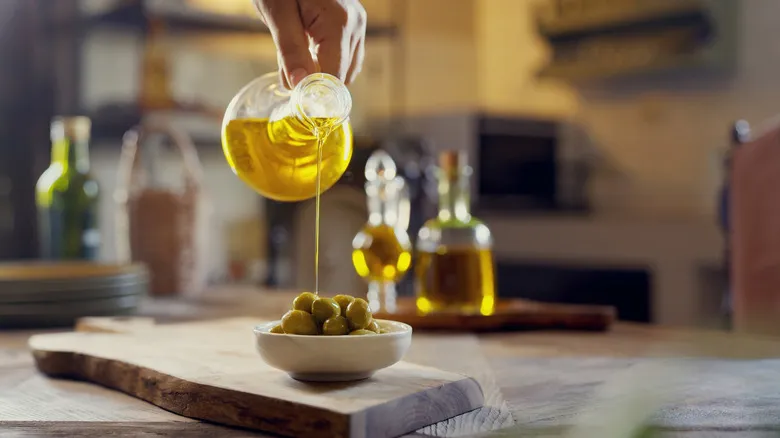
Why You Should Avoid Buying 'Light' Olive Oil
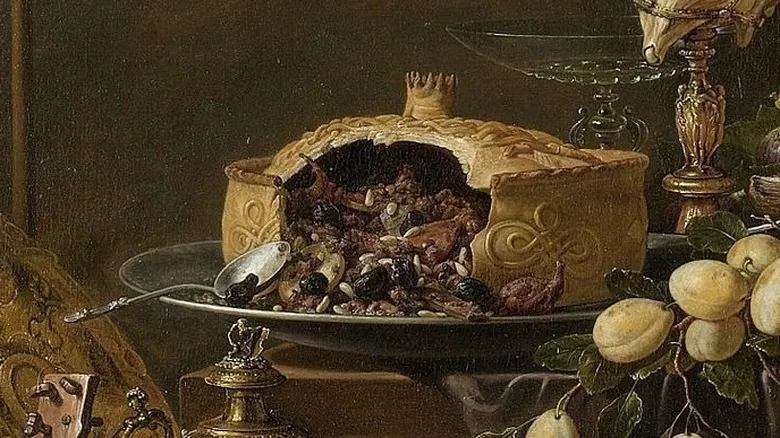
Pastry Wasn't Exactly For Eating In The 16th Century
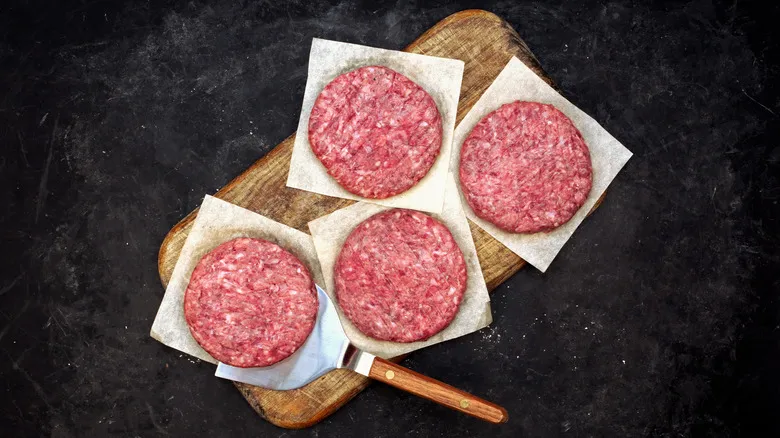
The Historic Reason Ground Beef Is Sometimes Called Hamburger
Next up

